A few weeks ago I refreshed my memory on the urgency of a critical topic: the ZERO Code and why we need to work on achieving zero carbon emissions NOW. The webinar on the Architecture 2030 ZERO Code was hosted by the AIA Codes Advocacy Group, moderated by Paul Karrer, and featured presenters, architects Ed Mazria of Architecture 2030 and Charles Eley. Here are my notes to share. Please help spread the word and share with your colleagues and friends.
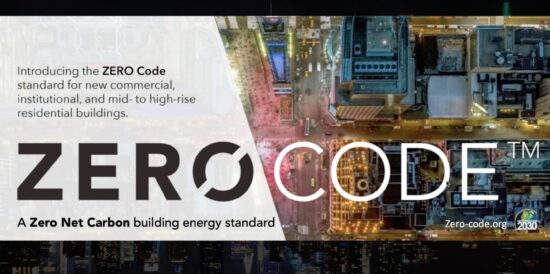
Why did Architecture 2030 develop the ZERO Code? Because it wanted to get everyone on board as soon as possible to prepare for the future. Forty one years from now, by 2060, the world population is expected to increase by 2.67 billion people and most of the population is expected to be absorbed by the urban areas. By 2060, global building floor area will increase by 230 billion square meters, in other words, double the current worldwide building stock.
On December 12th, 2015, the Eiffel Tower in Paris lit up with the slogan “1.5 degrees” as part of the World Climate Change Conference 2015. The goal was to reach peak CO2 emissions by 2020, which is one year from now (!), and reach zero emissions by 2050. The building sector is an important part of reaching those goals because the urban environment is responsible for 75% of all human produced global greenhouse gas emissions, and 50 – 70% of those emissions come from buildings.
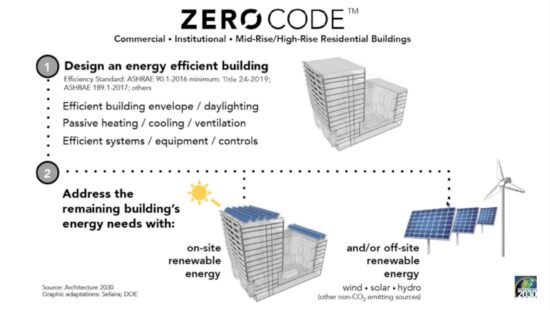
Introducing the ZERO Code
The ZERO Code is applicable to commercial, institutional, and mid-rise/high rise residential buildings. The ZERO Code has two requirements:
- Design an energy efficient building based on one of the following codes: Energy Efficiency Standard ASHRAE 90.1-2016 at the minimum, California Title-24-2019, ASHRAE 189.1-2017, and others.
- Address the building’s remaining energy needs with on-site renewable energy and/or off-site renewable energy.
How Do You Meet the ZERO Code?
To meet ZERO Code Requirement One, you can design your project using one of the two paths.
- Prescriptive Path: you meet the requirements for mininum building energy efficiency in the building envelope, HVAC, lighting, and other equipment. You can use COMcheck, a compliance software program developed by the U.S. Department of Energy Building Energy Codes Program, to determine if your project meets code and receive a Compliance Certificate.
- Performance Path: you model the project’s energy performance to determine if the project meets or exceeds the minimum building energy efficiency requirements. You can use DOE-2 or EnergyPlus software to simulate the project’s energy consumption for heating, cooling, ventilation, lighting, and plug and process loads.
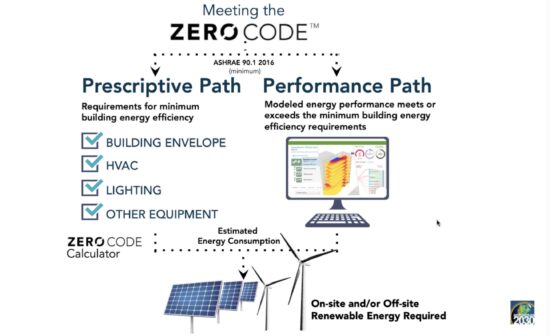
There is also the ZERO Code Energy Calculator that you can use to generate an estimated energy consumption for the building, and how much on-site and or off-site renewable energy is required to meet the ZERO Code.
To use the ZERO Code Energy Calculator, first, basic building information will need to be inputted along with which code pathway will be used: Prescriptive or Performance, country, city, number of stories, type of building, and gross floor area. If the building has another use, you can input another use description and additional floor area.
Second, information about the on-site PV system will need to be inputted. You can select either “Set Default Values” which will fill the information automatically, or you can input information for the number of collectors, module types, percentage losses, etc. Once tasks one and two are completed, then the ZERO Code Energy Calculator will generate:
- The renewable energy requirement results in metric or imperial.
- The estimated building energy consumption based on end use and site EUI (Energy Use Intensity).
- The annual AC & DC production of the PV system.
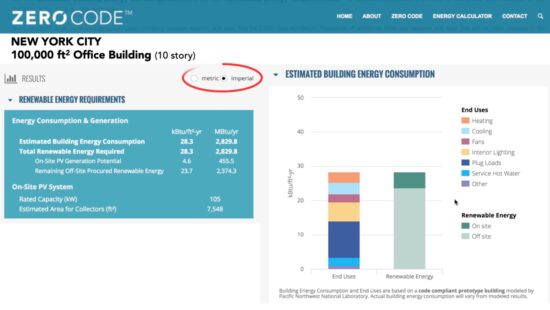
To meet ZERO Code Requirement Two, the project must be powered by renewable energy on-site and/or off-site.
An off-site renewable energy system will need to be selected to supply the building’s power source from a remote location and consequently economies of scales can be achieved. There are multiple renewable energy procurement methods such as direct ownership and virtual power purchase agreements (PPA). However, some methods have better outcomes than others. Class One Methods: self-owned, community solar, virtual PPAs, and re-investment trusts, have the best outcomes compared to the other methods in Class Two and Class Three.
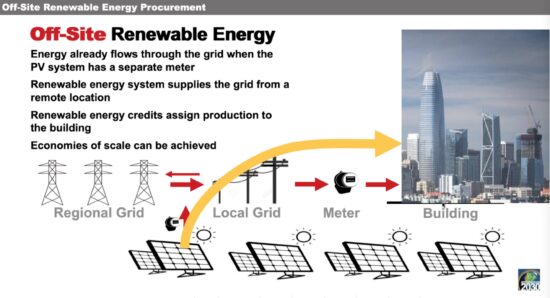
Whatever off-site procurement method(s) is chosen, there are requirements to make sure that the renewable energy supply to the project remains in place. There must be a legally binding contract and for no less than fifteen years. The renewable energy system must be based on PVs, solar thermal power plants, geothermal power plants, and/or wind turbines. Transparent accounting must be maintained and it clearly assigns the energy production to the zero net carbon building. Currently Architecture 2030 is working with third parties to support implementation and compliance of the renewable energy requirement.
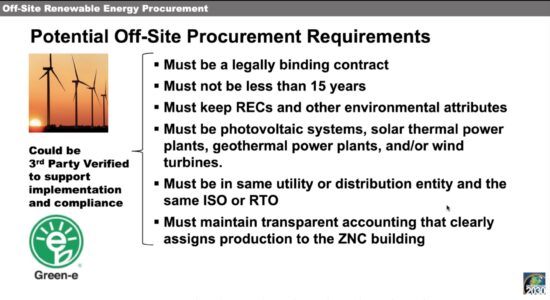
Why Is the ZERO Code So Important?
The state of New York’s energy consumption for residential building has been pretty constant from 1990 to 2016. It is essentially flat and not going down, and it is the same for commercial buildings. This trend is also the same for other states such as California, Colorado, Illinois, etc. The energy consumption for the U.S. building sector has also seen the same flat trend, hovering between 39.6 and 37.8 Quadrillion Btu between 2005 and 2017. Energy consumption during building operations hasn’t really increased but it also hasn’t been reduced. This trend is also similar for other developed countries. The ZERO Code is important because it will give us the guidance and tools to bring the trending flat line southward and reduce building energy consumption and carbon emissions to ideally ZERO by 2050.
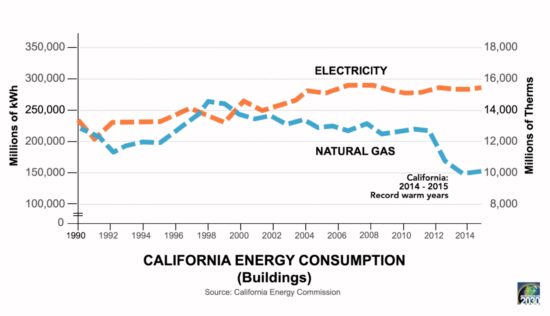
What Needs to Happen
New buildings need to reduce energy consumption and the number of building rehabilitations need to be increased so that both new and existing buildings are energy efficient.
What Is the World Doing About This?
Since the 2015 Paris Agreement, 9194 cities have signed on to the emissions reduction targets. China is getting ready to launch a “Nearly Zero Energy + On-site/Off-site Renewables” program. Fifty-nine international and Chinese firms have signed a historic China Accord to tackle climate change. The European Commission has the Directive 2010/31/EU which requires all new buildings to be NZEB (nearly zero energy building) by the end of 2020.
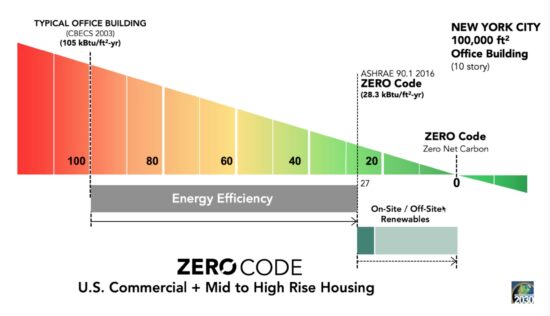
ZERO Code Summary
- Uses ASHRAE 90.1-2016 as a minimum and some other codes
- Supports upgrades every three years
- Determined to be cost effective
- Supported by COMcheck
- Supported by various energy modeling tools
- Supported by ZERO Code Calculator
- Results in zero net carbon buildings
- Creates jobs and a market for renewables
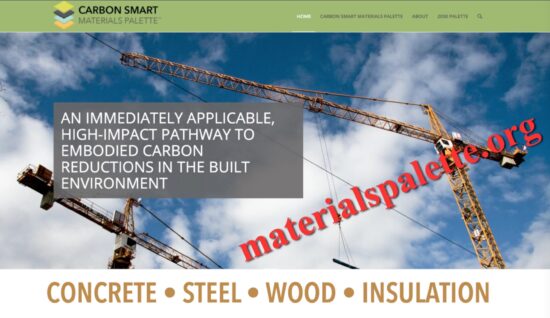
Additional Resources For Designing Energy Efficient Buildings to Meet the ZERO Code:
- 2030palette.org A database of sustainable design strategies and resources, offered in the English, Chinese, and Spanish languages.
- Materialspalette.org The Carbon Smart Materials Palette contains an attribute-based approach to embodied carbon reductions in the built environment and offers guidelines and options for emissions reductions.
Let’s keep the momentum going. I know we all can aim higher to build and maintain super energy efficient buildings. Please help spread the word about the ZERO Code.


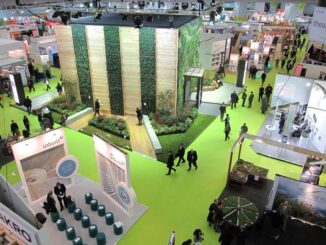
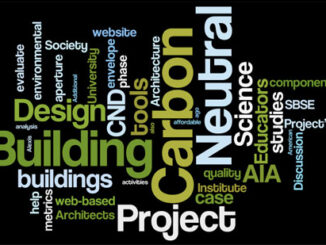

Love the article, especially the effort made in China to do the same! Is there a Chinese version, similar to your Gab report published in China? Keep your good work in keeping the world a better place for our future generation.